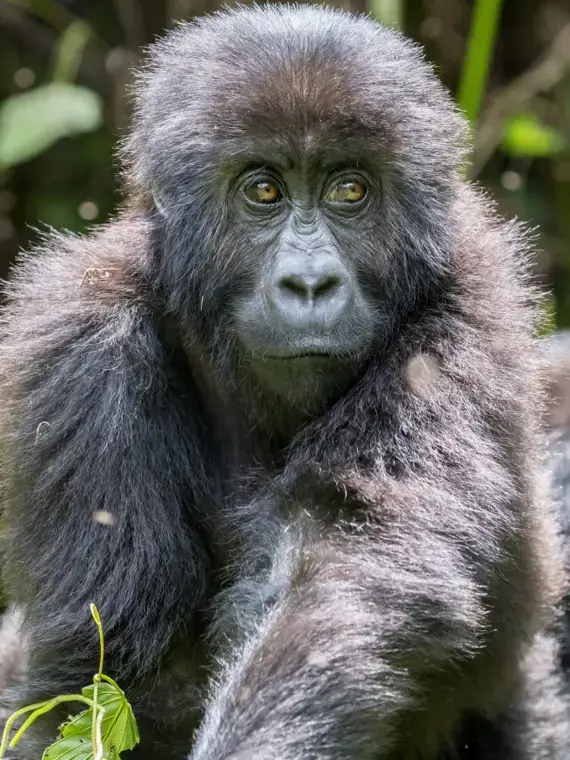Eco-guards are inseparable from Kahuzi-Biega National Park. Without them, the park would not be protected, and thus the rainforest and its inhabitants would cease to exist. In the Democratic Republic of the Congo, eco-guards are often stereotyped as having only military skills and purpose, as opposed to the image of a Northern Hemisphere park ranger who is viewed as an expert in biology, forestry, or ecology.
Eco-guards in KBNP take on a variety of roles and responsibilities, including patrolling, biodiversity monitoring, gorilla tracking, informing communities around the park, and guiding tourists. Some of them specialize in rapid interventions. Some utilize camera traps to identify species. Others work with the endemic and critically endangered Grauer’s gorillas; the eco-guards are better at predicting the behavior of the largest great ape than any "trained" biologist or ethologist. Wild gorillas need to be monitored to protect them and to collect ecological information. Gorilla habituation is a delicate and dangerous process that can take up to five years.
Some international organizations in the current narrative of global conservation standards have referred to eco-guards as "militarized conservation." These criticisms mostly lack context, victimize the communities involved in conflict, and elide from the narrative those eco-guards from Batwa communities. One internal study estimates that half of all eco-guards in Kahuzi Biega suffer from job-related trauma, and could benefit from counseling.
Who are the eco-guards? What do eco-guards do? This project paints a holistic picture of the responsibilities and challenges of being an eco-guard in KBNP.
Wildlife Messengers is a 501(c)(3) nonprofit organization with the purpose of making scientific and educational films, photographs, and audio recordings to promote nature conservation, mainly in countries with lower industrial bases, and to distribute them to national and international audiences. The targeted audiences include government authorities, education facilities, local communities, and non-governmental organizations.




